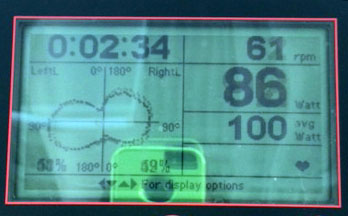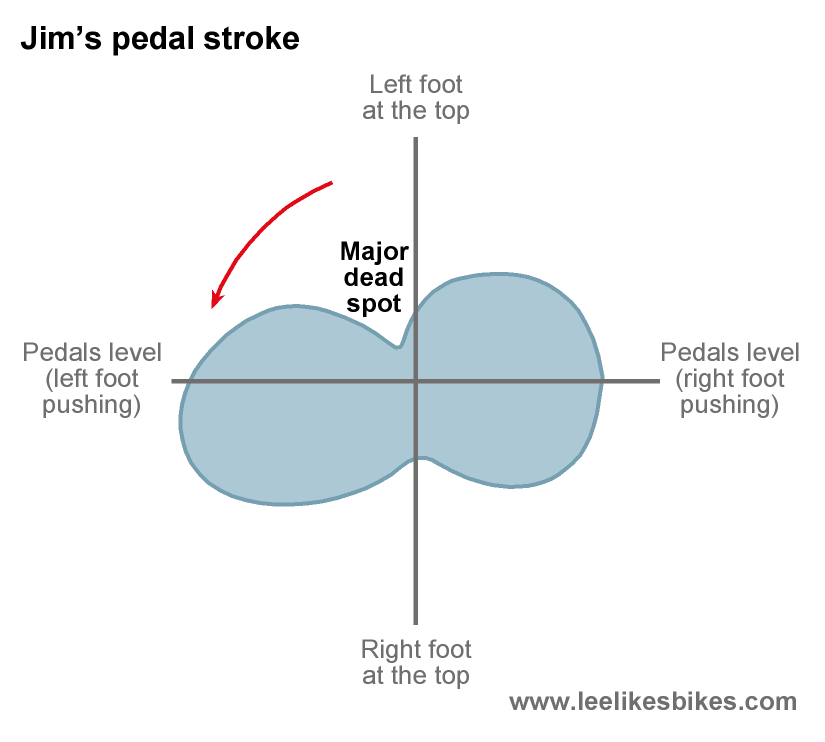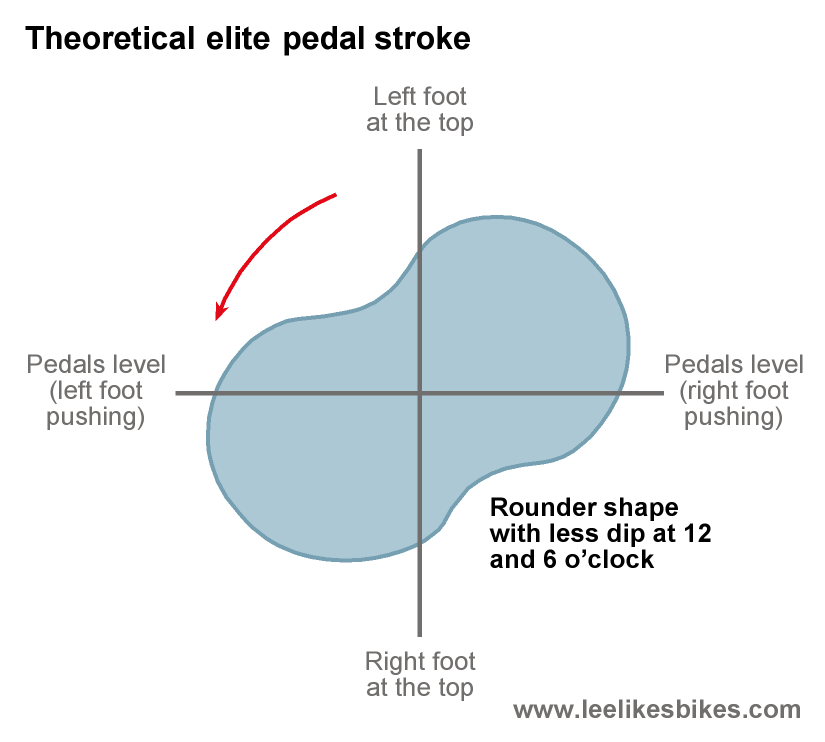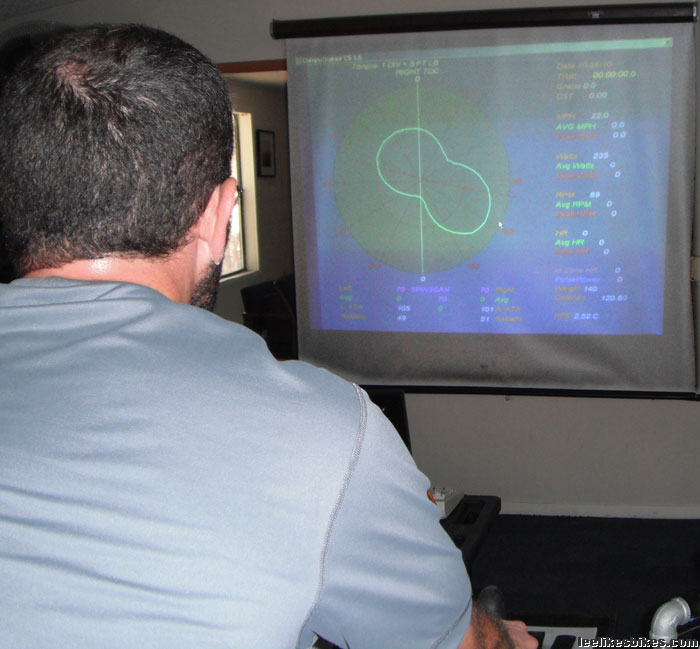Pedaling rounder and smoother
Hi Lee,
I’m in the midst of my second season of Pump Up the Base. I could see dramatic improvements in my riding last year and hope to see some more this spring and summer.
I’m fortunate to work out at a place that has WattCycles. They show cadence, wattage and time, but they also show a graphic of your pedal stroke. This photo is typically what my stroke looks like in the sweet spot, when I use the techniques you talk about in Pump Up the Base. To me, it feels the most natural and efficient. When I stand and pedal, it’s close to this, but with maybe even a bigger dip in the middle.

I asked some of the national/resident team cyclists working out up there about it, and they told me a perfect reading would be a perfect circle. I then asked the guy if he pedals a perfect circle. He just laughed and said no one does.
Assuming that’s the case — and I have no reason to doubt him — what should this readout look like, and how can I get there?
Jim
Hey Jim,
I’m glad you’re digging the Pump Up the Base off-season training plan. It’s a great way to build aerobic fitness, peak power and great pedaling technique. I just finished Year 4, Week 9, Workout B, and I’m feeling good.
You’re stoked to train with such detailed, immediate feedback. I love it.
What you’re looking at

The distance between the middle of the chart and the outside of the shape shows relative power. The farther the graph is from the center, the more wattage is being made. Your pedal stroke looks pretty darn good. Like most riders, you’re making most of your power on the downstrokes, a bit below level.
However, you have a minor dead spot at the at the top of your right pedal stroke (bottom of your left pedal stroke). You have a major dead spot at the top of your left pedal stroke (bottom of your right pedal stroke).
According to WattBike, an ideal, elite pedal stroke would look like this:

Peak power still hits a bit below level, but you can see less of a dip at 12 and 6 o’clock. This rider is pedaling “rounder” and, theoretically, more efficiently.
How to pedal rounder
The traditional advice: Scrape your pedal backward across the bottom of the stroke, then pull it upward on the upstroke. That’s smoother than simply mashing the pedals, but it uses relatively small, weak muscles. Plus it requires clip-in pedals.
Give this a try: Your hips and legs are made to push. Instead of trying to pull across the bottom of the stroke, focus on pushing across the top of the stroke. For many riders, this provides more, easier power. Plus it works with all pedals.
Check out the diagrams and drills in Pump Up the Base.
Here’s my SpinScan from October 2010, about a year after I first embraced pedaling as a skill. This chart goes clockwise.

At this moment I am 1) riding flat pedals and 2) pushing forward as soon as I can.
This was pretty smooth, but my left leg was being dumb. After four years of practice, I’m ready for another SpinScan test.
Mix it up
As you know, PUTB combines sustained pedaling with all-out sprinting.
When you’re holding sweet spot power, try to pedal as smoothly as possible. Push across the top. Make that peanut into an egg.
When you’re sprinting, CRUSH THE PEDALS! Forget about everything except pushing down as hard and fast as you can. 1,000 watts, 1,200 watts … what can you hit?
These skills support each other: When you can pedal more smoothly at moderate intensity, you can reach even higher peaks. When you can reach higher peaks, you can pedal even more smoothly at moderate intensity.
I could go on and on. I hope this helps,
Lee
Know more. Have more fun!
Join the leelikesbikes mailing list:

Leave a Reply
Want to join the discussion?Feel free to contribute!